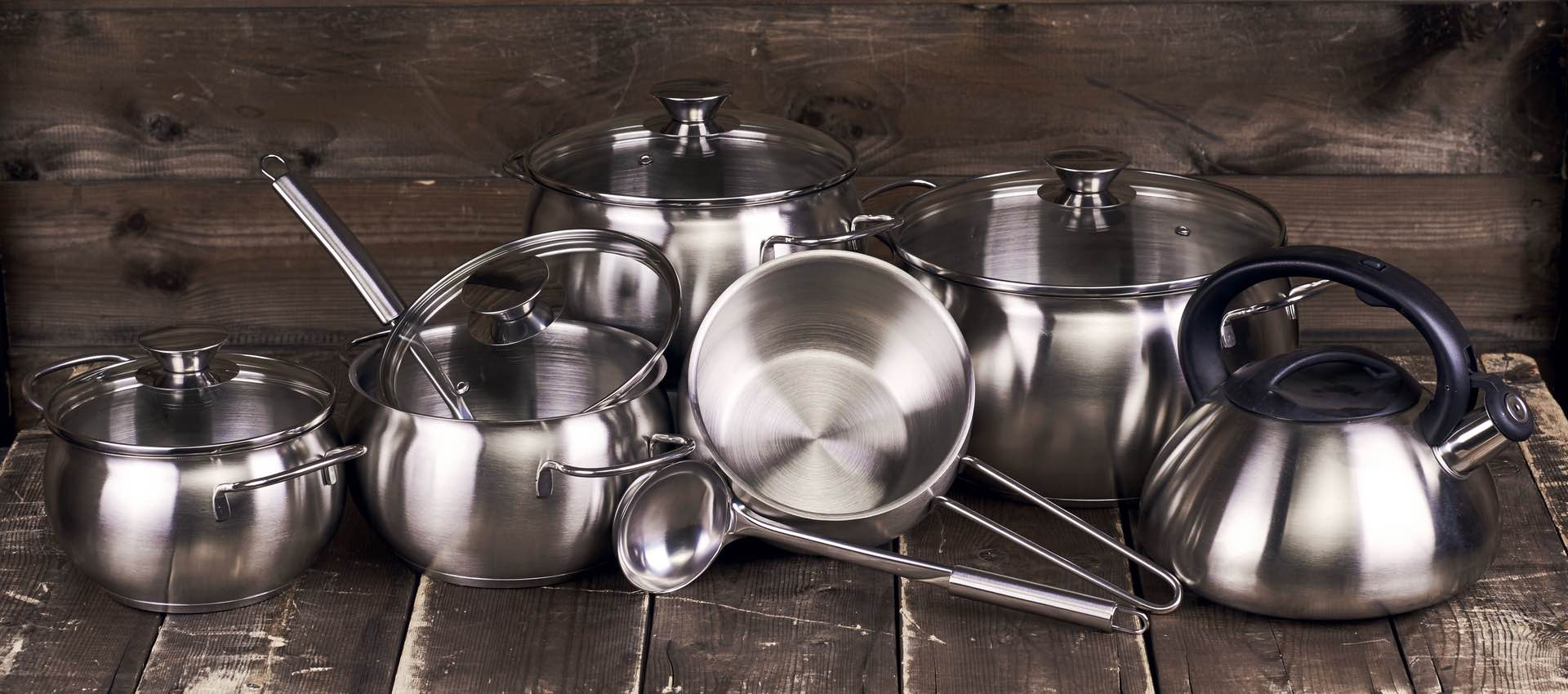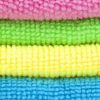Stainless steel appliances are now a hot commodity in kitchens, with everything like fridges, freezers, sinks and worktables being found in the finish – not to mention smaller items like cookware and flatware. It’s easy to clean, hard to break, and pretty to look at!
But just like all other finishes, stainless steel must be cleaned a very specific way to get the most life out of appliances.
What To Remember
There are many different compositions and “series” of stainless steel, and because of that there are different “films” (invisible protective layers on the steel) that rest atop the metal. Using the improper method can damage the steel because of the varying percentages of different metals in the steel.
In the food service world, the two most common series are the 400 series and the 300 series. The 400 series contains chromium, while the 300 series contains both chromium and nickel.
The film on stainless steel is remarkably thin, only millionths of an inch thick, so it is very important to avoid in method that could hurt the film on the steel.
This means avoiding mechanical abrasion (avoiding anything scratchy, such as scrapers, over cleaners, steel wool and wire brushes) not letting hard water sit on the surface, and not letting chlorides on the table. Also be sure that the cleaners you are using are not too abrasive.
General Stainless Steel Restoration (Sinks, Work Tables, Equipment, Appliances)
- Read your instruction manual first. There might be special things to factor in when it comes to your steel.
- Always remove food from your appliances quickly. Don’t let it sit.
- Make sure to always use the right cleaning tools, such as soft cloths, spongers, plastic scouring pads, or microfibers. You can find the proper microfiber for your steel with a guide online.
- Use the right cleaning chemicals. Chemicals that contain alkaline, alkaline chlorinated, or non-chloride chemical are the best ones for stainless steel. You can also get a cleaner that helps keep your steel looking shiny and help protect the film.
- Typically, stainless steel has a “grain” that runs in one direction or another. If you can see the lines, it’s always best to wipe parallel to them.
- Spray down your steel with a vinegar-water mix or glass cleaner and wipe off with a soft cloth. After that, use hot water and a gentle cloth or very gentle scrub on the metal.
- If harder stains or rust remains, sprinkle baking soda or another non-abrasive scrub cleaner on a soft, damp cleaning cloth, mixed with liquid soap. Clean problem areas gently, going with the grain of the stainless steel. Spray the surface with vinegar-water mixture or glass cleaner and wipe again. Pat dry.
- Apply “shiners,” if wanted.
While these guidelines are good for all equipment, there are a few additional aspects to keep in mind for flatware and cookware.
Stainless Steel Flatware
- Before cleaning, pre-soak for about 20 minutes using a pre-soaking solution. Change your soaking solution every few cycles, otherwise chemicals and food particles will accumulate to the solution and reduce its effectiveness. Do not let your flatware soak for too long.
- When hand-washing flatware, the only treatment needed is mild dish detergents and warm water. Do not use dish detergents with lemon or orange additives, as these acidic additives can cause corrosion of your stainless steel.
- Placing stainless steel in the dishwasher is fine, just make sure to not wash other metals next to them. Also avoid detergents that contain bleach or heavy chlorination, as they can erode away the protective coating on your flatware. Always load forks, spoons knives with the handles down and place knives separately.
- Once clean, dry your stainless steel flatware as soon as possible.
- If you have rust on your flatware, place a rag into some regular vinegar and rub the spots vigorously until the spots have disappeared, then put some olive oil on another clean rag and rub it gently into your stainless steel flatware. Remove oil from flatware after. If spot hasn’t disappeared, clean flatware with a mild detergent by hand and repeat the steps as needed. Pat dry.
Stainless Steel Cookware Care
- Season your cookware before your first use of the appliance and repeat as often as needed.
- If salt comes in direct contact with the steel, it can cause pitting. Make sure to always add salt to boiling water.
- Cookware will last longer if washed by hand with hot soapy water. Use plastic, wooden or silicone/rubber utensils to minimize damage to the surface, and always scrub in the direction of the metal grain.
- Rust can be cleaned off by sprinkling baking soda or another non-abrasive scrub cleaner on a soft, damp cleaning cloth or scrub and rubbed against problem areas gently. Rinse and pat dry.
Your stainless steel is an investment that will last you a long time when you care for it properly. If you’ve neglected your stainless steel equipment and it needs a deep cleaning, look for a reputable commercial cleaning company in your area who offers commercial kitchen cleaning as a service – they will have the equipment and know-how to get the job done efficiently.




